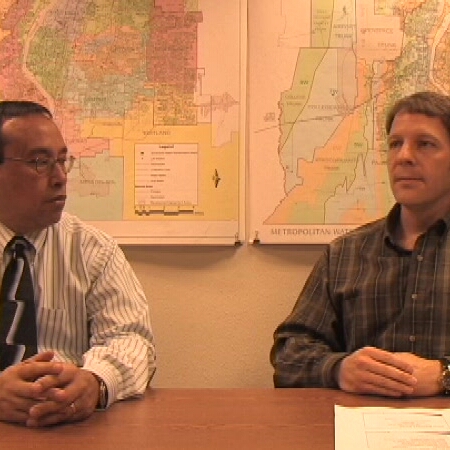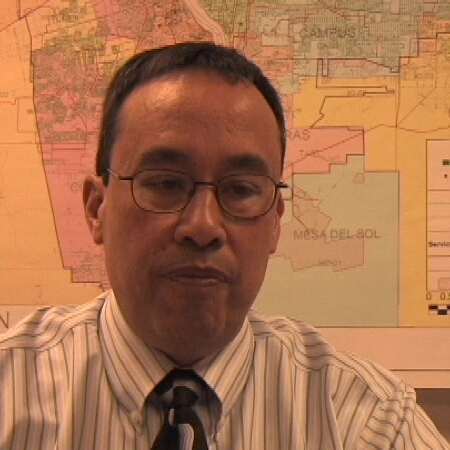8.2.3 Resources - Tools, Time and People
There are resources available to assist you in your efforts to implement an Asset Management Plan. Specific resources related to tools, time, and people are presented below.
Tools
There are many tools that are available to assist in Asset Management. These tools can be asset inventory programs, guides such as this one, or methods of completing particular aspects of Asset Management. Many of these tools are available on the Web. Some examples are Energy Star, Portfolio Manager, or EPA's CUPSS program. Other tools may be available from other utilities who have implemented Asset Management. Many of these utilities are willing to share what they have developed.
Time
Asset Management is not "doing more," it is "doing differently." Therefore, in the long run, it should not represent an increase in workload. In the short term, there may be additional work related to gathering data for the inventory, evaluating asset risk or in conducting business case evaluations for capital projects, but in the long term, work should be more efficient as it moves towards more planned and less reactionary. Asset Management is not something you will implement overnight. It will take months or years to get the initial Asset Management plan in place. It is best to accept this reality at the very beginning and not get discouraged about how long the process takes. It is important to remember that even in the initial stages, before you've fully developed your Asset Management program, things are improving at the utility and your customers are benefitting from your efforts.
People
Other chapters and sections of this guide discuss the importance of your staff in the process. In this section, it is important to think of other resources that are available to you beyond your staff and governing body. Other utilities that have initiated or implemented Asset Management can be a resource. Call them, e-mail them, or meet with them to gain knowledge about what worked for them or how they overcame challenges. State agency personnel, such as the KDHE capacity development staff, can also be a resource. Attending conferences that include an Asset Management component can also expose you to people who are trainers or practitioners. You may also want to form an Asset Management Users Group to allow you to meet regularly with other utilities who are engaged, or want to engage, in Asset Management. The users group can include individuals from a variety of utility sizes and types very effectively. This type of sharing network can provide support and expose you to new tools, additional resources, or examples of how to address challenges.
There are resources available to assist you in your efforts to implement an Asset Management Plan. Specific resources related to tools, time, and people are presented below.
Tools
There are many tools that are available to assist in Asset Management. These tools can be asset inventory programs, guides such as this one, or methods of completing particular aspects of Asset Management. Many of these tools are available on the Web. Some examples are Energy Star, Portfolio Manager, or EPA's CUPSS program. Other tools may be available from other utilities who have implemented Asset Management. Many of these utilities are willing to share what they have developed.
Time
Asset Management is not "doing more," it is "doing differently." Therefore, in the long run, it should not represent an increase in workload. In the short term, there may be additional work related to gathering data for the inventory, evaluating asset risk or in conducting business case evaluations for capital projects, but in the long term, work should be more efficient as it moves towards more planned and less reactionary. Asset Management is not something you will implement overnight. It will take months or years to get the initial Asset Management plan in place. It is best to accept this reality at the very beginning and not get discouraged about how long the process takes. It is important to remember that even in the initial stages, before you've fully developed your Asset Management program, things are improving at the utility and your customers are benefitting from your efforts.

|
|
|

|
|
|

|
|
|
People
Other chapters and sections of this guide discuss the importance of your staff in the process. In this section, it is important to think of other resources that are available to you beyond your staff and governing body. Other utilities that have initiated or implemented Asset Management can be a resource. Call them, e-mail them, or meet with them to gain knowledge about what worked for them or how they overcame challenges. State agency personnel, such as the KDHE capacity development staff, can also be a resource. Attending conferences that include an Asset Management component can also expose you to people who are trainers or practitioners. You may also want to form an Asset Management Users Group to allow you to meet regularly with other utilities who are engaged, or want to engage, in Asset Management. The users group can include individuals from a variety of utility sizes and types very effectively. This type of sharing network can provide support and expose you to new tools, additional resources, or examples of how to address challenges.




